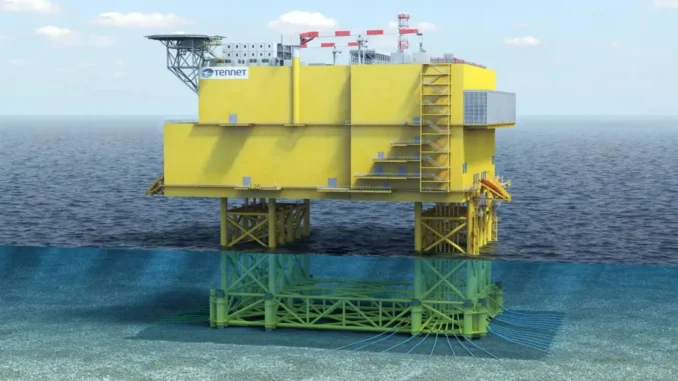
Time and time again I am being told that nuclear power is too expensive. And it is true, building a large nuclear power station costs billions. My typical response is that whilst nuclear power is expensive, building an electricity system powered with renewables isn’t any cheaper.
This retort is seldom challenged and that’s probably because most people have no idea what an electricity system powered with renewables actually costs. And this is understandable too, because many of the systems that would form part of such a renewable system hardly exist and if they do, the size or scale of these systems is orders of magnitude smaller than what they need to be in a real life system. You can think of electrolyzers, large scale battery storage, hydrogen ships, long distance grid connections and the like.
So this is typically where the debate ends: although we have an approximate understanding of what it costs to build a nuclear power plant, we have no idea what the renewable alternative costs. Yes, we all know the graphs of ever decreasing LCOE (Levelised Cost of Energy) of wind turbines and solar panels – lately they are actually going up, not down – , but it takes a lot more to build a reliable electricity system that keeps the lights on. The LCOE figures only tell us what a kWh costs when the wind blows or the sun shines, it does not tell us what electricity costs when there is no wind or sun.
So here we tend to get stuck in the argument.
Yet the other day I came across a news item that may finally allow us to take this discussion a bit further: an announcement by the 100% Dutch state owned high voltage network provider TenneT on the realisation cost of the offshore network infrastructure provided free of charge to the offshore wind farm developers to tie in to. These offshore wall sockets as we call them server one single purpose: transferring the power generated by offshore wind farms to the Dutch shore. Without wind farms these wall sockets would never be built. There would be no need. And of course, without the free provision of these wall sockets, there would be no offshore wind. Offshore wind would be too expensive if it had to carry the cost of the offshore grid connections.
I stress this dependency between the offshore wind farms and the offshore grid because even though the grid is provided free of charge, we cannot have offshore wind without the cost of the offshore network. They are an integral part of the costs that are associated with offshore wind. It is similar to having a bridge without a foundation. It doesn’t work. Somebody needs to pay for it, ore likewise: if you select another form of power generation like wind on land, solar or nuclear, then you can save the money spent on the offshore grid.
Here is the TenneT article:
“TenneT awards on- and offshore converter stations and HVDC technology with a total capacity of 22 gigawatts”
And from the text: “The total volume of the eleven orders [to build the network] is approximately 23 billion euros.”
That’s serious money. Serious in the same sense that nuclear power plants cost serious money. But this is just the network transferring the electricity from A to B. What’s missing is the wind farm that needs to generate this electricity.
I am not a big fan of offshore wind, so I do not have a large archive with costs of offshore wind farms at hand, but Google suggested the following:
- The Dutch technical magazine “De Ingenieur” references the “Rekenkamer” which is a governmental organisation which sets the costs of offshore wind between 1.5-2 million Euro/MW
- Energyglobal.com references Rystad Energy which estimates the cost components of a 14 MW offshore wind turbine as follows: turbine 12.3 + foundation 4 + turbine installation 1 + foundation installation 1 = 18.3 million USD. Costs for the interconnecting network is not given. This then equates to 18.3/14 MW * 0.92 EUR/USD = 1.2 million Euro/MW.
Let’s take the most generous number: new offshore wind turbines cost 1.2 M Euro/MW.
Now the cost of the total 22 GW offshore windfarm becomes: 23 (network) + 22 * 1.2 (wind turbines) = 49.5 billion Euro.
But that’s installed capacity, to get to the equivalent average power delivered over the year we need to multiply with the capacity factor. In 2021 the capacity factor for Dutch offshore wind was 39%, but new windfarms are located further offshore with larger turbines which will result in higher capacity factors. The International Energy Agency (IEA) puts the capacity factor of new offshore developments at 40-50%. Let’s take the most generous number and put the capacity factor at 50%.
This means that an offshore windfarm with an average continuous power of 11 GW costs about 50 billion Euro.
That solves one side of the equation, now we need to do the nuclear bit. As is commonly known, like offshore wind, the costs for nuclear are heavily front loaded. Building a nuclear power station requires a lot of money and it takes several years to build the plant before it can start producig electricity and pay back the loans. History has also shown that especially in the western world, projects get delayed which can increase costs significantly. All in all, building a nuclear power plant is not without financial risk, which is why financial markets charge high interest rates. As a consequence, financing costs for nuclear can run up to 50-70% of the project value.
There is a way around this however: governments can borrow at significant lower interest rates. Financing costs drop to about 10% according to a recent study done by the Dutch consultancy Witteveen en Bos. And since the same government is providing the offshore infrastructure for the wind farms, it is justified to assume that at least 50% of the nuclear project is realized by the government and this could be the same TenneT that provides the offshore networks.
With the financing costs set at 10% all that is missing is the price of e nuclear power plant. The Witteveen en Bos report states the following (translated): “The benchmark for overnight cost of capital (OCC) for current nuclear power projects is estimated at 3520 Euro/kW.” This means that a French EPR of 1600 MW has a capital requirement of 5.6 billion Euro.
If we add the 10% financing costs an EPR costs 1.1 * 5.6 = 6.2 billion Euro.
Now lets compare that with the 11 GW wind farm. Let’s assume a nuclear power plant has a capacity factor of 93%, then we require 11 GW / 1.6 GW / 0.93 = 7.4 EPR nuclear power stations which cost 7.4 * 6.2 = 46 billion Euro.
So 11 GW nuclear power costs 46 billion Euro, that’s roughly 10% cheaper than offshore wind.
But actually, nuclear is a lot cheaper than offshore wind, because:
- Nuclear delivers power 24/7, wind does not. Wind needs backup which is not accounted for in this comparison.
- Modern nuclear power stations have a design life of 60 years, that is about 3 times as long as offshore wind. So you have to replace the offshore wind turbines twice in the life time of a nuclear power plant. These costs have not been accounted for in this comparison.
- Nuclear delivers continuous power at the rated capacity (11 GW in this example), which means that the downstream network can be sized rougly to the same capacity. Wind on the other hand delivers between 0 and 22 GW, which means that the downstream network needs to be significantly larger than for nuclear. These costs have not been accounted for in this comparison.
Now you can play around with the numbers and you can make different assumptions, but this will not turn the basic fact around that:
If people complain that nuclear is so extremely expensive that there is “no business case”, they should be consistent and acknowledge that there is no business case for offshore wind either.



